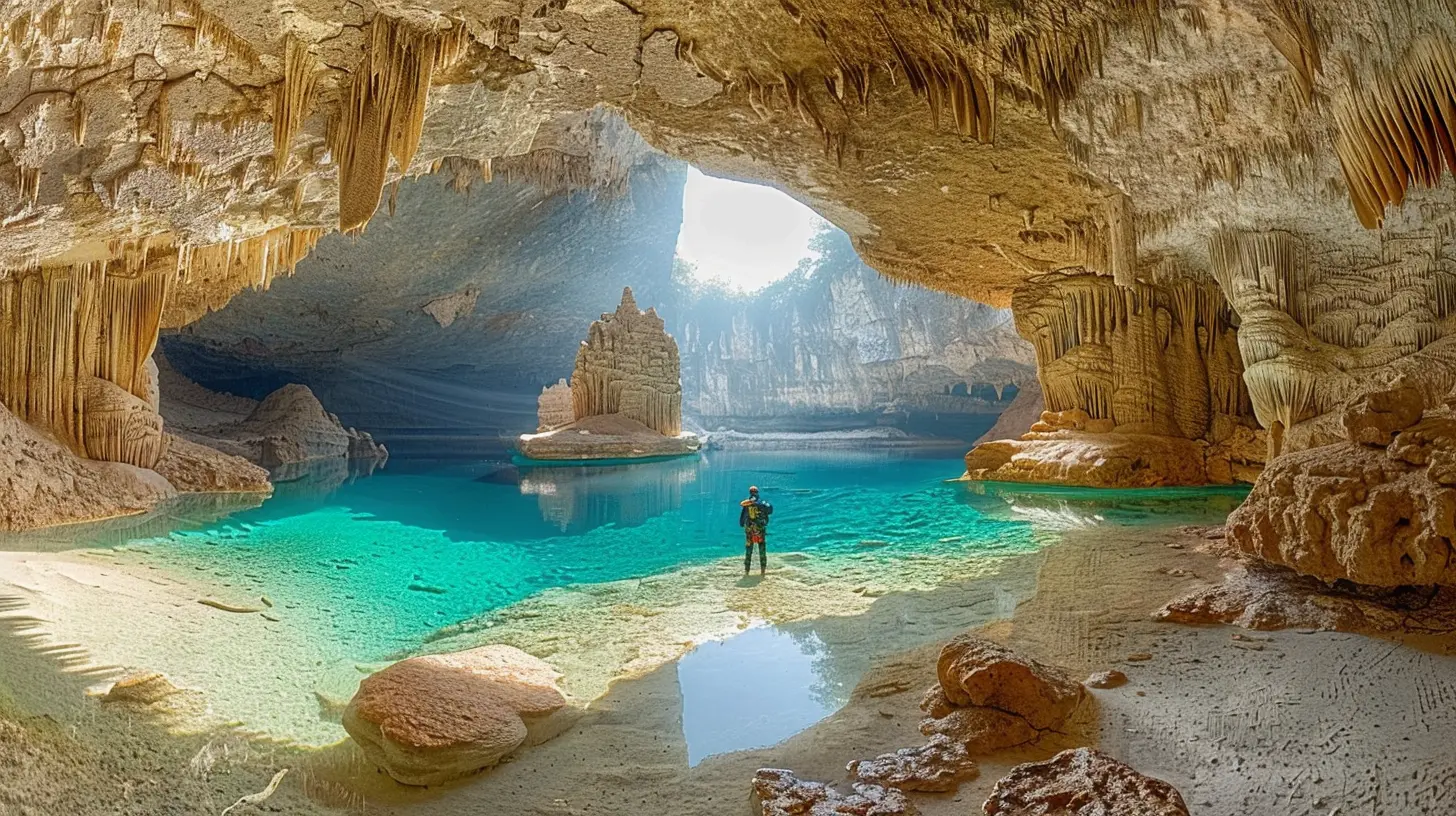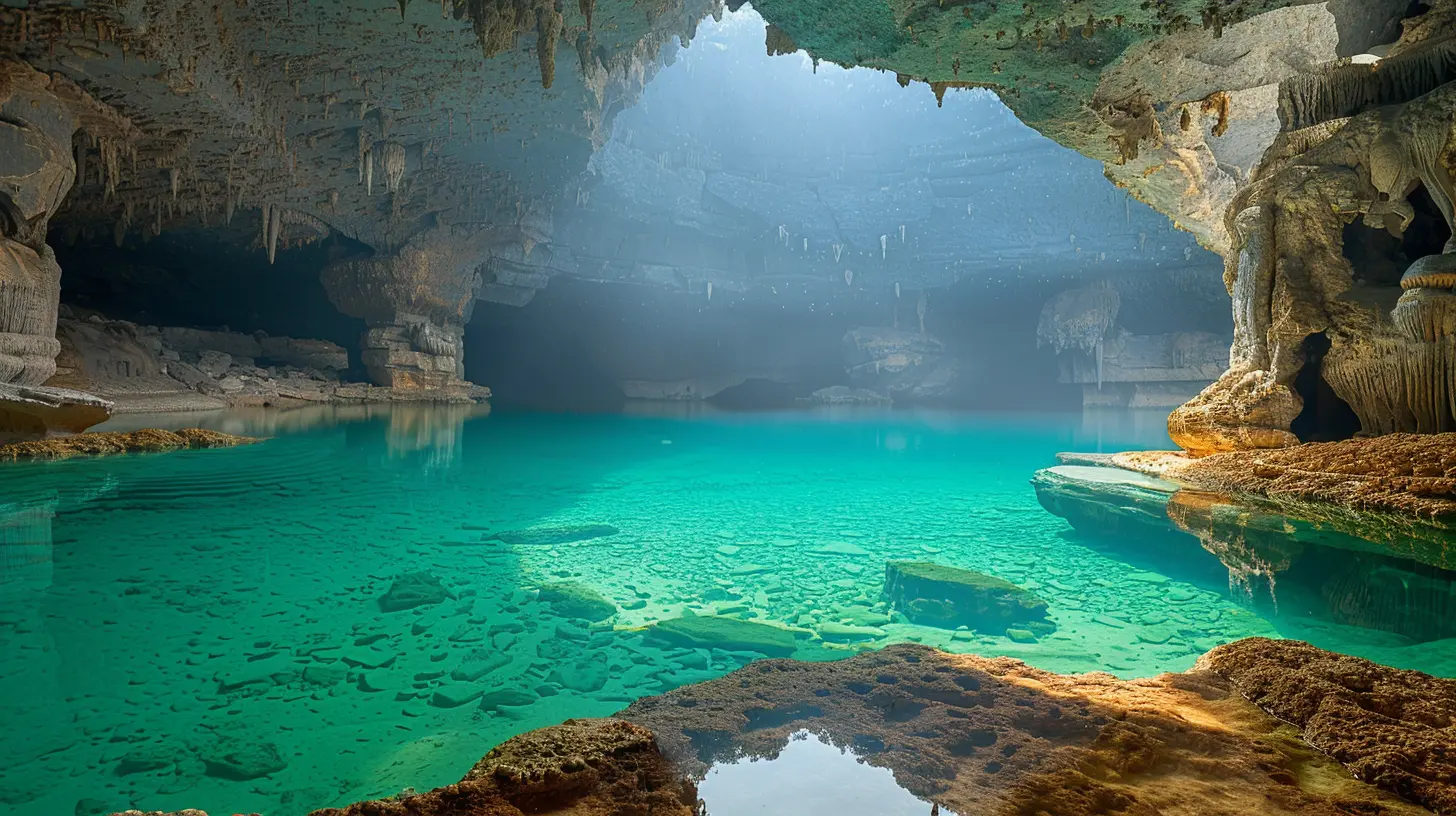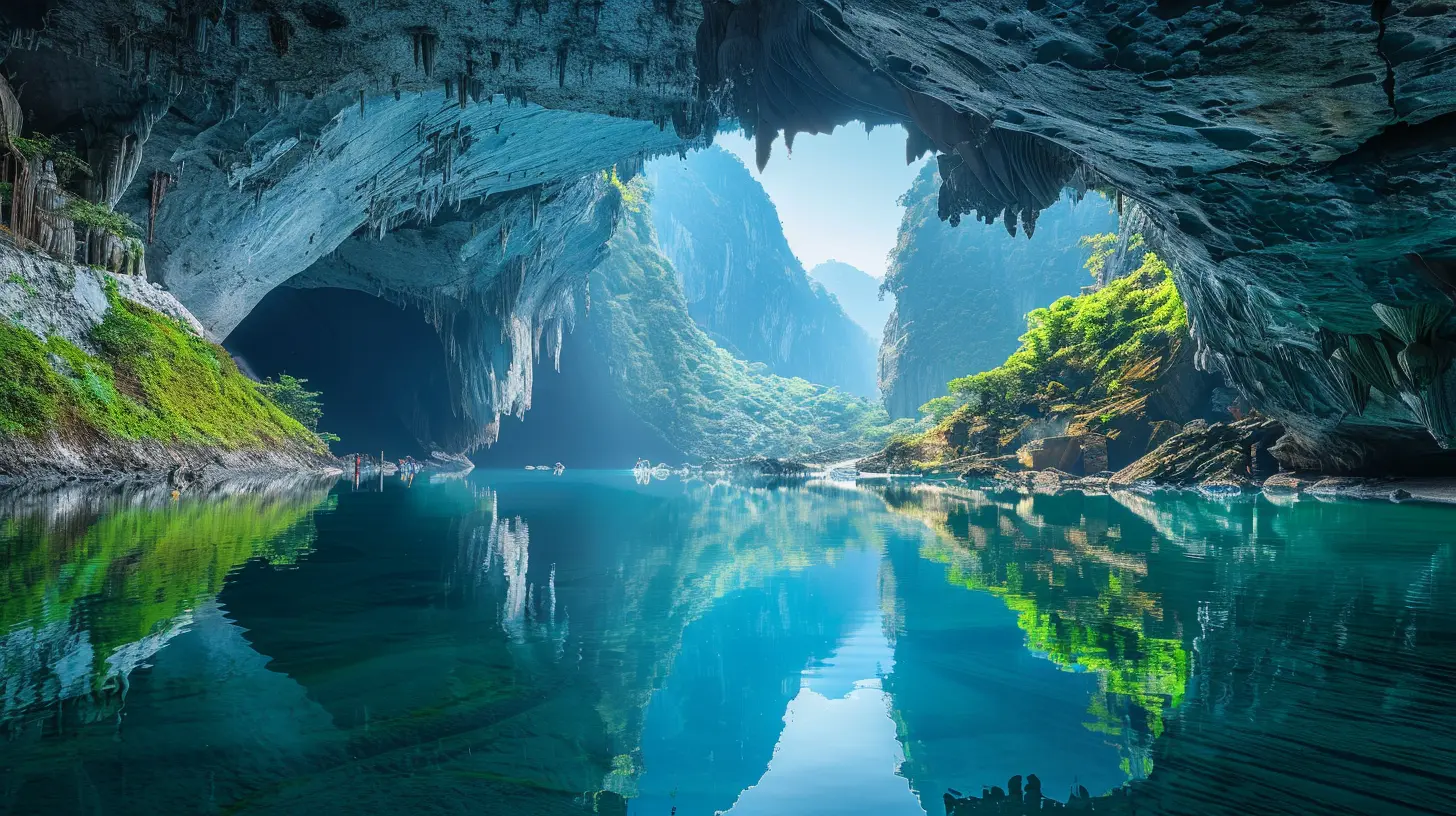Navigating the World of Cave Diving: A Journey into the Unknown
14 June 2025
Cave diving. Just saying the words sparks a mix of intrigue, excitement, and—let's be honest—sheer terror. It's not your average Sunday swim. It’s deep, dark, and downright dangerous. Yet, for those who crave adrenaline and the thrill of the unexplored, cave diving is the ultimate adventure.
But here's the thing: diving into an underwater cave isn't something you do on a whim. It’s not like grabbing your mask and fins and heading to the beach. This world—hidden beneath the earth’s surface—is unforgiving. It demands respect, preparation, and nerves of steel.
So, if you're thinking about dipping more than your toes into this mysterious side of scuba diving, you’re in the right place. Let’s talk gear, skills, risks, and what it really takes to navigate the world of cave diving.
What Exactly Is Cave Diving?
Before we go any further, let's clear the air (pun intended).Cave diving is a type of technical diving that takes place in water-filled caves. It’s not snorkeling around a reef or diving around shipwrecks. We’re talking about squeezing through tight rock passages, navigating in complete darkness, and relying solely on your gear to survive.
Unlike open water diving, cave diving happens in environments where there's no direct access to the surface. There are ceilings above your head—sometimes just inches away. So, if something goes wrong, you can't just pop up and call it a day. That’s why cave diving is often labeled one of the most dangerous sports on the planet.
Pretty intense, right?
Why Do People Even Do This?
It’s a fair question. Why would anyone choose to go cave diving?For many, it’s about the mystery. These underwater caves are some of Earth's last unexplored frontiers. Inside, you’ll find surreal beauty—stalactites, ancient fossils, crystal-clear water, and tunnels that seem to go on forever.
Others are drawn to the challenge. Cave diving pushes your mental and physical limits. It demands unwavering focus, superb buoyancy control, and problem-solving skills under pressure.
Plus, let's not forget the thrill factor. It’s like being inside a real-life adventure movie where you’re the lead character.
The Training: Not Just Optional—It’s Essential
Here’s the non-negotiable truth: you can’t, and shouldn’t, cave dive without proper training.Even if you’re a certified open water or advanced diver, cave diving is a whole different beast. It requires specialized training because your average scuba skills simply won’t cut it in an overhead environment.
Types of Cave Diving Training:
1. Cavern Diver CourseThis is the starting point. You’ll learn how to dive in the entrance zones of caves—areas where you can still see natural light and a direct path to the surface.
2. Intro to Cave Diving
Now you’re stepping further inside. This course teaches line-following, gas management, and basic navigation.
3. Full Cave Diver Certification
This is the real deal. You’ll learn how to handle complex cave systems, use advanced gear configurations, and manage emergencies like silt-outs and lost lines.
Trust me, every single dive skill needs to be second nature. You won’t get a second chance inside a cave.
Gearing Up: The Tools That Keep You Alive
When it comes to cave diving gear, redundancy is the name of the game. In English? You bring backups for your backups.Here’s a rundown of the essentials:
- Double Tanks: You’ll need two tanks with separate regulators. One fails? You’ve still got air.
- Primary and Backup Lights: It’s pitch black in caves. You lose your light, you lose your way—end of story.
- Guide Line/Reel: This line is your lifeline, literally. It helps you find your way back and prevents getting lost in the labyrinth.
- Helmet: For bumping into ceilings (which happens a lot).
- Fins and Dry Suit: Precision movement and thermal protection are key.
There’s also masks, slates, dive computers, and sometimes rebreathers if you’re going deep and long. Any piece of gear failing could mean life or death. That’s the harsh reality.
The Risks: Cave Diving Isn’t For Everyone
Let’s not sugarcoat it—cave diving is risky. The margin for error is razor-thin.Here are just a few dangers cave divers face:
1. Silt-Outs
Kick up a little too much sediment and, bam! Zero visibility. You could be navigating blind—a nightmare scenario inside tight tunnels.2. Equipment Failure
Even the best gear can malfunction. That’s why you plan like a mad scientist and test everything before the dive.3. Getting Lost
One small mistake with your guide line, and suddenly you’re disconnected with no idea how to get out.4. Running Out of Air
Gas management is gospel in cave diving. You follow the “Rule of Thirds” — one-third in, one-third out, one-third for emergencies.5. Panic
In an overhead environment, panic can be fatal. Keeping your cool isn’t just helpful—it’s essential.Mental Game: Inside Your Head Matters Most
More than anything, cave diving is a mental game. You’re constantly doing math in your head—air consumption, dive time, route navigation. All while swimming through cold, dark, sometimes claustrophobic spaces.If you’re claustrophobic, anxious under pressure, or prone to panic, cave diving might not be your calling. And that’s okay! Not every adventure is for everyone.
But if you thrive on solving problems, staying cool under pressure, and want to experience something that few people on Earth ever will, then you might just have the cave diver’s mindset.
Popular Cave Diving Spots Around the World
Now for the fun part—drooling over some of the most incredible cave diving destinations on the planet.1. Cenotes, Mexico (Yucatán Peninsula)
These freshwater sinkholes are a cave diver’s paradise. Expect crystal-clear water, stunning formations, and a bit of Mayan history to boot.2. Ginnie Springs, Florida, USA
A favorite among cave diving pros, Ginnie Springs offers incredible visibility and complex cave systems for training and thrill-seeking.3. Blue Hole, Dahab, Egypt
This place is legendary—for both its beauty and its danger. It’s claimed the lives of many divers, so don't even think about it without full certification and experience.4. Devil’s Eye, Florida, USA
Part of the Santa Fe River system, this dive site is not for the faint of heart. Tight passages and strong currents make it a serious challenge.5. Sistema Sac Actun, Mexico
Think of it as the Everest of cave diving. It’s the longest underwater cave system in the world, and it's absolutely mind-blowing.What Does a Real Dive Look Like?
Let’s paint the picture. You gear up, double-check everything, and start your descent. You pass through a narrow entrance and immediately feel the temperature drop. The only light is your torch, cutting through the darkness like a lightsaber.Every breath echoes in your head. You follow the guide line carefully, keeping it within sight and feel. The cave opens up into a vast chamber—gravity-defying stalactites hang above while delicate formations grow beneath you.
You’re weightless, floating through a time capsule. It’s serene and surreal. But you never forget where you are—you keep one eye on your depth and the other on your air.
Welcome to planet Earth’s final frontier.
The Aftermath: Why It’s All Worth It
When you surface—safe, sound, and a little chilly—there’s a rush like nothing else. You just went somewhere very few people have ever been. No crowds. No noise. Just you, your team, and the cave.That moment? It sticks.
You’ve faced the unknown and came back wiser, stronger, and a whole lot saltier (literally and figuratively).
Final Thoughts: Is Cave Diving for You?
So, what do you think? Is cave diving calling your name—or making you want to crawl under a blanket?Either way, mad respect. It takes guts to even consider it. But if the thirst for adventure outshines the fear, then maybe it's time for you to start your journey into the underground world.
Just never forget—the cave doesn't care how cool you are, how expensive your gear is, or how many Instagram followers you have. Respect it. Prepare for it. And always, always dive smart.
all images in this post were generated using AI tools
Category:
Extreme SportsAuthor:

Uziel Franco
Discussion
rate this article
2 comments
Penelope Lopez
Intriguing insights; safety should always come first.
June 21, 2025 at 4:58 AM

Uziel Franco
Thank you! Safety is indeed our top priority in exploring the depths.
Adeline Middleton
Cave diving reveals both the beauty and danger of exploration, emphasizing the need for safety and respect.
June 15, 2025 at 4:44 AM

Uziel Franco
Thank you for your insightful comment! Indeed, recognizing both the allure and risks of cave diving is crucial for safe exploration.


